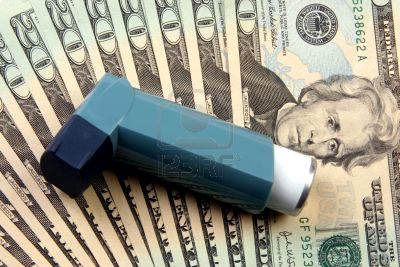What’s Wrong with the Market for Asthma Drugs?
The problem:
Pulm icort, a steroid inhaler, generally retails for over $175 in the United States, while pharmacists in Britain buy the identical product for about $20 and dispense it free of charge to asthma patients. Albuterol, one of the oldest asthma medicines, typically costs $50 to $100 per inhaler in the United States, but it was less than $15 a decade ago, before it was repatented…
icort, a steroid inhaler, generally retails for over $175 in the United States, while pharmacists in Britain buy the identical product for about $20 and dispense it free of charge to asthma patients. Albuterol, one of the oldest asthma medicines, typically costs $50 to $100 per inhaler in the United States, but it was less than $15 a decade ago, before it was repatented…
Rhinocort Aqua, a prescription drug that [sells] for more than $250 a month in Oakland pharmacies last year but costs under $7 in Europe, where it is available over the counter.
The role of government:
[T]here are no generic asthma inhalers available in the United States. But they are available in Europe, where health regulators have been more flexible about mixing drugs and devices and where courts have been quicker to overturn drug-patent protection.
“The high prices in the U.S. are because the F.D.A. has set the bar so high that there is no clear pathway for generics,” said Lisa Urquhart of EvaluatePharma, a consulting firm based in London that provides drug and biotech analysis. “I’m sure the brands are thrilled.”
Source: The New York Times.


